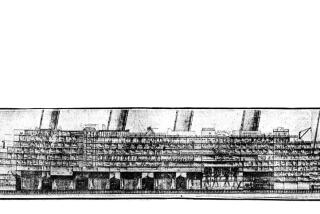New Study Terms Titanic’s Steel Too Brittle to Withstand Iceberg Collision
- Share via
NEW YORK — It was called unsinkable and it sank on its maiden voyage 81 years ago, killing hundreds. Now maritime experts say the Titanic was made of steel too brittle to withstand the collision with an iceberg.
Whether the Titanic could have stayed afloat in the North Atlantic after the collision, even if it had been made of higher-grade steel, is “problematical,” said William Garzke, a New York naval architect. But lives might have been saved if the sinking had just been stalled a couple of hours longer, he said.
Pronounced unsinkable by its owner, the British company Cunard White Star, the Titanic was en route from Southampton to New York when it collided with an iceberg off Newfoundland on April 14, 1912.
Of the more than 2,340 people aboard, only about 700 were able to get off in the two hours and 40 minutes before the Titanic sank at 2:30 a.m. April 15.
Garzke is co-author of a report on the sinking presented last week at the centennial meeting of the Society of Naval Architects and Marine Engineers.
He said it is impossible to know what would have kept the ship afloat without studying its hull, which is partly buried in the seabed 12,000 feet down. Although it has been examined closely by undersea robot cameras, there’s no prospect of the damaged bow section ever being raised, he said.
In their report, Garzke and his four co-authors said the ship’s steel plating suffered “brittle fracture” in the 31-degree water. They said a better grade of steel might have held up longer.
More to Read
Sign up for Essential California
The most important California stories and recommendations in your inbox every morning.
You may occasionally receive promotional content from the Los Angeles Times.













